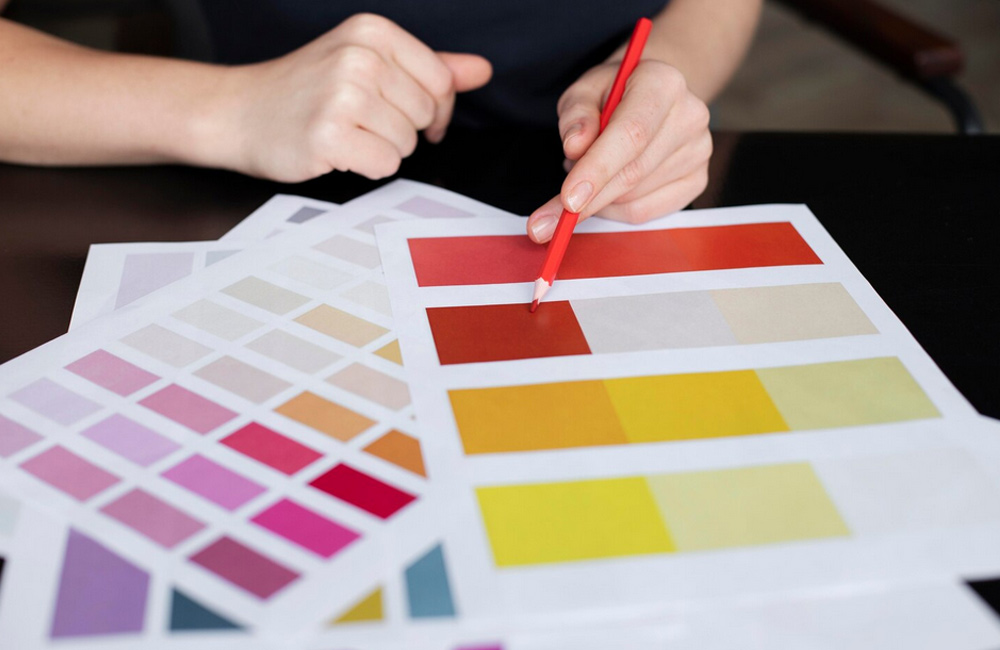Colors are more than decoration—they are a silent language that instantly evokes feelings and shapes perception. In branding and web design, color choices and hierarchies often determine within seconds whether visitors trust you or move on. In this article, I explain how colors work psychologically, why they can build trust, and how to use them deliberately for your brand.
Why colors are so powerful
Colors interact directly with our subconscious. They activate memories, cultural associations, and physical reactions (e.g., increased focus or relaxation). While words take time to work, colors immediately convey mood—making them a powerful tool in branding.
Basic color meanings (overview)
- Blue: Trust, calm, professionalism — popular for tech, finance, and health brands.
- Green: Nature, sustainability, healing — ideal for ecological, holistic, and growth-oriented brands.
- Red: Energy, urgency, passion — attracts attention but should be used sparingly.
- Yellow: Optimism, creativity, lightness — inviting but can appear restless if overused.
- Black: Elegance, clarity, authority — strong in luxury and design contexts.
- White / Neutral: Space, calm, minimalism — creates focus and highlights accents.
- Purple: Spirituality, intuition, exclusivity — suitable for conscious or creative brands.
How colors build trust — five mechanisms
- Consistency: A recognizable palette creates familiarity. When visitors see the same colors across website, social media, and offers, reliability emerges.
- Audience fit: Colors aligned with your target audience’s expectations and culture reduce cognitive friction and increase likability.
- Contrast & readability: Good contrast supports legibility. Texts, buttons, and CTAs must be visually clear—this builds trust in usability.
- Emotional alignment: When your color world reflects your brand promise (e.g., calm, competence, creativity), authenticity—the core of trust—arises.
- Visual hierarchy: Colors guide eyes and attention: accent colors for CTAs, neutral tones for areas—making navigation logical and reliable.
Practical tips: Choosing a trustworthy palette
- Start with brand emotion: Define in one sentence the emotion your brand should convey (e.g., “Calm & professional”). Choose colors that support this mood.
- Main + accent + neutrals: Use a clear structure: 1 main color (brand tone), 1–2 accent colors (for buttons/highlights), and 2–3 neutrals for backgrounds and text.
- Test contrast: Check color contrast with tools (e.g., WebAIM contrast checker) to ensure readability, especially on mobile devices.
- Consider cultural nuances: Colors mean different things in different cultures—keep your target markets in mind.
- Emotion over trend: Don’t follow trends blindly. Choose colors from your brand essence—trends fade, trust lasts.
- Create mockups: Design simple examples for website, social media, and print to see how the palette works in practice.
Common mistakes that erode trust
- Too many clashing colors — looks chaotic and unprofessional.
- Poor text contrast — reduces readability and frustrates users.
- Color choices that don’t fit positioning (e.g., bright colors for a therapeutic brand).
- Inconsistent use across channels — reduces recognition.
Quick case tip: Testing your palette
Create two simple page variations (A/B): one with your original palette, one with a revised, more harmonious palette. Measure metrics like time on page, CTA click rates, and conversion—colors often show measurable differences in user behavior.
Conclusion
Colors are not decoration; they are communication. A consciously chosen color palette immediately conveys what your brand stands for and lays the foundation for trust. When used intentionally, structurally, and with audience understanding, colors are a powerful, often underestimated tool for true brand loyalty.
Want to review or refresh your color palette? Let’s talk—I’ll help you create a palette that builds trust.
Image: freepik.com

